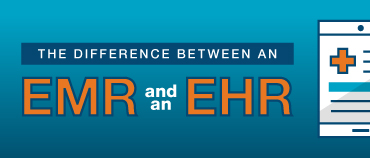As health care professionals continue to navigate the current pandemic, one thing remains clear: we are constantly playing catch-up. “We had some warning shots across the bow with SARS and other outbreaks, but we weren’t prepared for COVID-19,” said Kenneth Kubitschek, MD, the CEO of Carolina Internal Medicine Associates. “We have to constantly keep our antennas up for new information and developments.”
Fortunately, in doing so, we are effectively redesigning the long-term/post-acute care industry for the future – and hopefully for the better.
The Role of Telemedicine
Technological innovation helps medical professionals focused on aging populations not only battle COVID-19 now, but also prepare for outbreaks and new pandemics moving forward.
Take telemedicine, for example, which already proved invaluable to the health care system this year. Physicians are using it to triage patients, as well as conduct routine exams, which helps to both reduce emergency department visits and general hospitalizations.
What’s more, the Centers for Medicare & Medicaid Services (CMS) eased restrictions on the use of telemedicine in long-term and post-acute care in March as the coronavirus spread across the United States. The agency waived the requirements for physicians and non-physician practitioners to perform in-person visits for nursing home residents, allowing visits via telehealth platforms when appropriate.
A subsequent skilled nursing facility visit can be furnished via Medicare telehealth without the limitations that the telehealth visit is once every 30 days (CPT codes 99307-99310),” CMS stated. The agency also added initial (99304-99306) and discharge services (99315/16) to the list of approved telehealth appointments, which previously required in-person visits.
It remains to be seen whether these changes will remain in place once the coronavirus is part of our past. Nonetheless, expect an ongoing and enhanced focus on making telemedicine as easy and efficient as possible while meeting regulatory requirements for quality assurance.
Facilities are also likely to work on ensuring reliable bandwidth throughout their buildings for telehealth connectivity. A growing number are already creating exam rooms specifically designed for telemedicine work.
Echoing similar sentiments, Dr. Kubitschek stressed that technology that ensures communication and care while avoiding contact “is certainly where the future is for the time being.”
EHRs Step in to Fill the Void Left by Quality Measures
The pandemic is bringing new attention to the fact that quality measures do not always tell the entire patient story. For instance, data reporting lower fall rates are likely skewed right now because residents in quarantine and isolation are less active and mobile compared to pre-pandemic times.
Meanwhile, practitioners suggest that data reporting cases of depression and agitation are probably higher for those same reasons. It’s also important to note that while this data reveals the potential effects of the national shutdown as it relates to mental health, it does little to explain what residents and families need from providers, facilities, and facility staff to feel connected, engaged, and comforted during this time.
Moving forward, we will need to find ways to ensure that data creates a holistic, person-centric picture of each patient. Some suggest that these answers could exist in a reimagined electronic health record (EHR). Such changes would require the platform to focus heavily on care plans themselves and utilize smart methods of capturing care planning information, including the details of conversations with families and documentation of advance directives. They would also demand that the EHR go beyond transactional uses to ensure that patient care follows the evidence available and that treatment options stem from a complete picture of the patient.
“EHRs can potentially help in terms of providing guidance, distributing information via templates or checklists, and identifying trends and creating metadata assessments,” said Dr. Kubitschek. EHRs continue to prove to be essential communication tools during this pandemic, he added, suggesting that such technology should be considered one upside of the public health crisis.
Looking ahead, we should not expect a flood of new quality measures; instead, we can anticipate a greater focus on how to use and refine existing measures to provide the information that practitioners need to ensure person-centered quality care.
Watch for increased reliance on customized dashboards within EHRs that serve as a map to track patients, trends, and problems, as well as things like personal protective equipment (PPE) shortages.
Survey Uncertainties
In the early stages of the pandemic, CMS suspended survey activity for certain non-emergency state survey inspections and stressed that they would focus on compliance with federal infection control policies. In June, the agency announced increased civil monetary penalties for patterns of infection-related deficiencies. At the same time, it released new expectations for updated surveys, including a renewed focus on resident abuse, but without any specific timeline.
How lenient or stringent surveyors are likely to be as we move forward remains a major unknown for LTPAC facilities. However, practitioners can prepare to the best of their abilities with thorough documentation of all efforts to protect patients and staff, prevent the spread of the coronavirus, and promptly provide appropriate care for those who show signs of infection.
Looking Ahead: The Coronavirus Commission
The COVID-19 pandemic is far from over, and sometimes it seems that with each discovery about the coronavirus comes new questions. Like the rest of us, CMS does not know exactly what the future holds for long-term care. However, the agency recently announced the establishment of the Coronavirus Commission on Nursing Home Safety and Quality to work on this vision. The group plans to conduct a comprehensive assessment of the overall response to the pandemic in nursing homes and then recommend actions and best practices for both immediate and future use.
The commission focuses on protecting residents from COVID-19 and improving the responsiveness of care delivery to maximize quality of life. The group also plans to address efforts that enable rapid and effective identification and mitigation of virus transmission in nursing homes. Members of AMDA and the American Health Care Association will help lead this commission.
As we look to the future, Netsmart is learning from the pandemic and looking for ways to enhance the utility of GEHRIMED and its other products to fill gaps, meet unmet needs, and make work after COVID-19 as productive and efficient as possible.
To do so, we are listening to practitioners and care team members who have embraced challenges and seized opportunities in recent months and have important insights into how we can foster necessary change.







.jpg)
